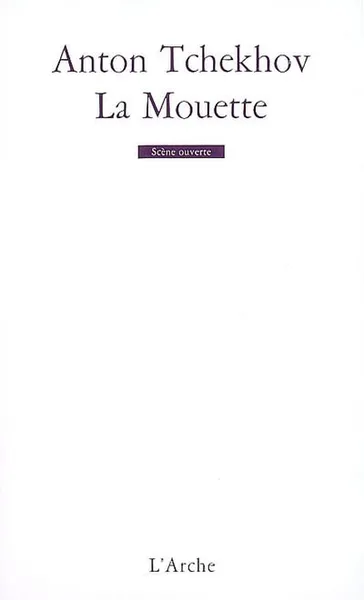Arsène a publié une critique de La Mouette par Anton Chekhov
lecture qui me laisse sur ma faim
Après avoir vue la pièce au théâtre de l'Odéon, je me suis posé la question de pourquoi elle m'avait laissé indifférent : le texte ou la mise en scène ? De fait le texte parle, pour ce que j'en comprends, d'un jeune homme qui veut créer un nouveau type d'écriture qui sorte de l'habitude. Il tente de créer une pièce d'avant-garde dans laquelle une jeune femme proche joue un rôle et dont il est amoureux. Malheureusement, sa mère, actrice reconnue et entichée d'un écrivain à la mode, se moque de lui et la pièce s'interrompt. D'autres personnages interviennent aussi. La jeune femme amoureuse de cet écrivain célèbre part pour devenir actrice à Moscou. On apprend qu'elle a eu une liaison avec cet homme, qu'un enfant est né et mort, et l'écrivain est retourné vers l'actrice célèbre. Lorsque la jeune femme revient et que le jeune homme comprend qu'elle aime toujours …
Après avoir vue la pièce au théâtre de l'Odéon, je me suis posé la question de pourquoi elle m'avait laissé indifférent : le texte ou la mise en scène ? De fait le texte parle, pour ce que j'en comprends, d'un jeune homme qui veut créer un nouveau type d'écriture qui sorte de l'habitude. Il tente de créer une pièce d'avant-garde dans laquelle une jeune femme proche joue un rôle et dont il est amoureux. Malheureusement, sa mère, actrice reconnue et entichée d'un écrivain à la mode, se moque de lui et la pièce s'interrompt. D'autres personnages interviennent aussi. La jeune femme amoureuse de cet écrivain célèbre part pour devenir actrice à Moscou. On apprend qu'elle a eu une liaison avec cet homme, qu'un enfant est né et mort, et l'écrivain est retourné vers l'actrice célèbre. Lorsque la jeune femme revient et que le jeune homme comprend qu'elle aime toujours l'écrivain à la mode, il se suicide. Elle n'est pas non plus devenue une actrice reconnue. Mais pour en revenir à la pièce, la mise en scène ne m'avait pas inspiré et je ne peux pas dire que le texte non plus ne m'éveuve davantage. Les caractères des personnages semblent presque tous avoir des traits d'égoïsme, ont peu d'attention envers les autres, à part peut-être celui du médecin qui semble moins intéressé par sa propre personne. Le jeune écrivain n'arrive pas à produire des textes qui le satisfassent, la jeune femme reste subjuguée par l'écrivain reconnu et ne peut se réaliser en tant qu'artiste, la mère, reste uniquement concernée par l'admiration qu'elle reçoit, l'écrivain à la mode profite de l'admiration que lui porte la jeune femme pour la séduire et la laisser tomber quand elle ne l'intéresse plus...

